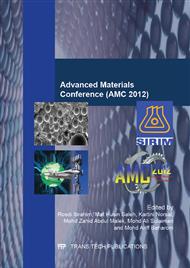p.119
p.128
p.134
p.139
p.144
p.149
p.155
p.164
p.169
Modification of Thin Film Surface Morphology by Thermal Annealing Process to Enhance Organic Photovoltaic Solar Cell Performance
Abstract:
This paper reports effect of modification thin film surface morphology using thermal annealing process in order to enhance organic photovoltaic solar cell performance. The organic photovoltaic solar cell (OPV) were fabricated using bulk heterojunction structure, consist of p-type semiconductor of polythiophene (PT) derivative and an n-type of fullerene, C-61 derivative. The devices structure can be named as Al/LiF/polymer composite film/PEDOT-PSS/ITO. For comparison, the devices were varies; as cast and annealed at 125°C for half an hour to modify the thin film surface structure. The performances of the devices were studied by observing the current-voltage characteristics of the device in dark at ambient temperature and under standard A.M 1.5 illumination. The light conversion efficiency of the resulting photovoltaic devices increases from 0.04% (as cast) to 2.3% after thermal annealing process. As a result, the annealed organic photovoltaic devices, show enhanced efficiencies compared with as cast device due to the enhancement in transport properties of polymer base photovoltaic device.
Info:
Periodical:
Pages:
144-148
Citation:
Online since:
January 2014
Authors:
Price:
Сopyright:
© 2014 Trans Tech Publications Ltd. All Rights Reserved
Share:
Citation:



